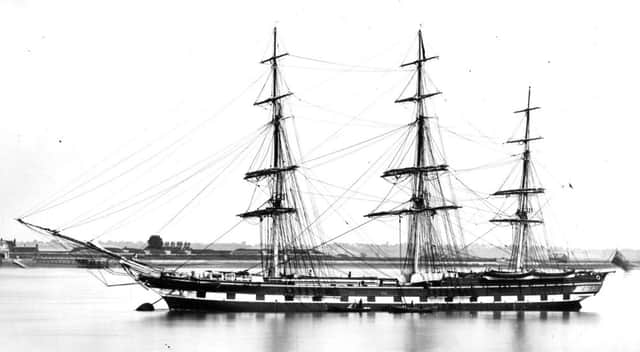ON THE WATERFRONT: Laing's Parramatta of 1866


We start with the full-rigged ship Parramatta, which as the Wear’s largest wooden-built ship, was launched by James Laing at Deptford on May 29, 1866. Described as a “splendid specimen of naval architecture,” she was laid down in December 1864, with framing being completed in May, 1865 and planking begun the next August.
The largest wooden-walled ship built beforehand on the Wear was also constructed by Laing, this being the clipper Duncan Dunbar which had been wrecked in 1865.
Advertisement
Hide AdAdvertisement
Hide AdAt 231 feet long with a 38-foot two-inch beam, her dimensions were regarded as paramount in ship design, namely that length should equal six times breadth.
No expense was spared in ensuring only the finest timber was used, namely best English oak and East India teak, although iron beams were fitted.
Owned by well-known ship owners Devitt and Moore of London, who traded between the Thames and Australia, the 1,521 registered ton Parramatta was equipped to the highest standards, being able to accommodate about 50 first-class passengers in unusually large cabins, together with space for a few-second class.
A condensing engine could desalinate 400 gallons of seawater every 12 hours, while fresh meat would always be available on long voyages owing to facilities for carriage of livestock. Modern Glover patent steering gear allowed greater control of the helm in bad weather.
Advertisement
Hide AdAdvertisement
Hide AdAfter customary launching celebrations, the three-masted vessel, which was equipped with six large lifeboats, was towed into the River Wear Commissioners’ graving dock for fitting out.
She left the Wear for London on June 23, 1866 in command of Captain John Williams. Named after the Parramatta River New South Wales, the area around which was first settled by the British in 1788, Parramatta was engaged in the emigrant trade, returning to London with wool.
She was one of the fastest “Blackwall frigates,” a colloquial name used for this type of three-masted full-rigged ship, which sailed between England and the eastern outposts of the British Empire. They were so-called as the first were built at Blackwall on the Thames.
To relieve boredom on long voyages between London and Sydney, a fortnightly serio-comic magazine entitled the Parramatta Sun was published for the entertainment of passengers.
In 1887, she was purchased by Simonsen of Mandal, Norway.
Advertisement
Hide AdAdvertisement
Hide AdThe fate of Parramatta is shrouded in mystery. After leaving Sapelo in the US state of Georgia with a cargo of pitch pine for Kings Lynn, Norfolk on January 12, 1898, she was posted as missing; never to be seen again.